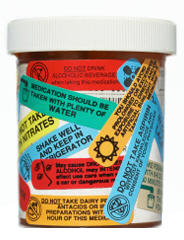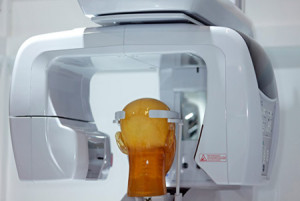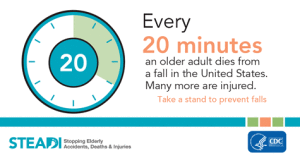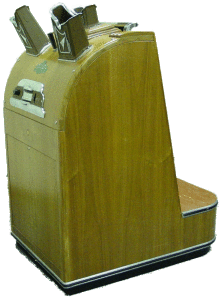December 2nd, 2015
A Melange of Medications
Charity Maniates, MSPA, MPH, PA-C
It’s unavoidable — treating the frail, confused, 80 year-old patient with congestive heart failure, atrial fibrillation, type 2 diabetes mellitus and chronic kidney disease in your office, emergency department, or hospital ward. In geriatrics, often acute presentations are the result of harmful medical interactions, resulting in falls, toxicity, delirium, or acute kidney injury.
Over time, many medications are prescribed with good intentions but are not reevaluated or stopped. The result is a melange of medication lists and prescriptions stashed in an older adult’s kitchen cupboard, used either inappropriately or accidentally. The arduous task of clarifying medications requires detective skills — especially when you’ve been given a handwritten scrap of paper listing twenty medications, many crossed out and rewritten with questionable doses.
 As a physician assistant or nurse practitioner, we are often the first to assess and initiate workup, order diagnostic tests, and tailor treatment plans for older adults. We can help to identify potentially harmful medication interactions, dose antibiotics for renal function, or consider alternative medications to reduce falls, delirium or worsening dementia. With all that is required of clinicians, delving into the pages of pharmacopoeia for guidance is simply daunting.
As a physician assistant or nurse practitioner, we are often the first to assess and initiate workup, order diagnostic tests, and tailor treatment plans for older adults. We can help to identify potentially harmful medication interactions, dose antibiotics for renal function, or consider alternative medications to reduce falls, delirium or worsening dementia. With all that is required of clinicians, delving into the pages of pharmacopoeia for guidance is simply daunting.
The Beers Criteria, first published in 2012, is a comprehensive list of potentially harmful medications for older adults extensively researched and published in the Journal of the American Geriatrics Society. The aim of the 2015 Beers Criteria is to create heightened awareness of potentially harmful medications to stimulate clinicians to weigh the risks and benefits of starting a mediation or to consider an alternative. Recognizing common drugs that carry potential for mishap — including first-generation antihistamines, tricyclics, peripheral alpha 1 blockers, sulfonylureas, and oral NSAIDs — is a good step in reducing polypharmacy. Below are a few medications highlighted in the “American Geriatrics Society 2015 Updated Beers Criteria for Potentially Inappropriate Medication Use in Older Adults” review, published in November’s Journal of the American Geriatrics Society 1:
- Proton-pump inhibitors are a new addition to the Beers Criteria due to the increased risk of C. difficile, fractures and bone loss and should not prescribed for >8 weeks. In the setting of chronic NSAID use or erosive esophagitis, a PPI course may be extended.
- It’s known that there’s an increased risk of mortality with first- and second-generation antipsychotics. The new update recommends avoiding antipsychotics in dementia patients or delirious patients with behavioral issues and, instead, to focus on nonpharmacological approaches. If the patient is a harm to themselves or others (as in psychosis), starting risperidone or quetiapine at the lowest dose possible may be considered.

- Digoxin, commonly used for rate control in atrial fibrillation, was newly added to the list of potentially harmful medications. Choose other rate control medications over digoxin due to elevated risks for mortality and hospitalizations. Higher doses are not shown to improve symptom management and lead to toxicity. So, avoid dosages > 0.125 mg/d if digoxin is the only option for atrial fibrillation and heart failure.
- It’s not surprising that benzodiazepines are still on the list, but this drug class frequently is prescribed among older adults in the community. According to the Beers Criteria, benzodiazepines increase risk of cognitive impairment, delirium, falls, fractures, and motor vehicle accidents. If pharmacologic treatment is required for anxiety, consider an SSRI or Buspar.
Of course, there are circumstances in which potentially harmful drugs need to be prescribed. Obviously, every clinical scenario is unique, so simply use your clinical judgement. Taking the extra time to review a medication list may give you the answer to diagnosing vague symptoms or a patient’s confused state. The older adult will be appreciative, and no one will fault you for paying attention to the details.
1 J Am Geriatr Soc. 2015 Nov;63(11):2227-46. doi: 10.1111/jgs.13702. Epub 2015 Oct 8.
November 25th, 2015
Looking and Finding
Harrison Reed, PA-C
I sat in the bulky padded chair and eyed the mechanical gadgetry around me.
“What did you say this was for?” I tried to not sound confrontational, but there must be some deformity of my vocal cords that makes it hard.
“It’s called a CT scanner,” the dental technician said. “It takes pictures so we can look at your mouth and throat.”
She had missed the meaning of my inquiry but it wasn’t her fault. She didn’t know how familiar I was with the test, how I had ordered dozens—hundreds maybe—already this year and used the results to guide someone else’s fate. She didn’t know that I was usually the one wearing the scrubs and I was in no hurry to point it out.
No one wants to be that guy.
 “Right, but what exactly are we looking for?” Annoyance started to creep into my voice. It was my first appointment with a new dentist and I’m a terrible dental patient. Maybe it’s all the work I had on my teeth as a kid or maybe it’s those bright overhead lights and the stiff, mechanized chairs. Or maybe life is just easier for the examiner than the examined.
“Right, but what exactly are we looking for?” Annoyance started to creep into my voice. It was my first appointment with a new dentist and I’m a terrible dental patient. Maybe it’s all the work I had on my teeth as a kid or maybe it’s those bright overhead lights and the stiff, mechanized chairs. Or maybe life is just easier for the examiner than the examined.
“Well, it’s important to check your neck for any masses, anything that could be wrong with your airway,” she said. “Just to be safe.”
Right, I thought. An asymptomatic, healthy 20-something needs a CT of the neck to be safe from… what exactly?
“Hold still.” The machinery began to hum and whirl.
I wondered how many scans each year the small dental office needed to charge to afford its own CT scanner, but I didn’t say that out loud. Besides, there was nothing sinister about this place. Humans, in general, just seem to have an obsession with looking.
I’m guilty of that inquisitive trait, too. Isn’t everyone who pursues science? But lately I’ve shifted my focus past what we could look for and started wondering if we should.
Blasphemy, I know. After all, we deal in the currency of knowledge; get as much information as you can and figure out what to do with it later. But we’ve already stumbled across the risks of looking.
Shoe-fitting fluoroscopes—gimmicky x-ray boxes that claimed to match shoppers with the perfect footwear—were once popular in 1950s shoe stores.1
And just as the government finished pulling those hazardous contraptions from sales floors, medicine entered a new era: the Age of Radiography. The invention of the computed tomography (CT) scanner launched an obsession with looking inside the human body at all costs. Even if that price included, among other things, cancer.2
Of course, we have since weighed both sides of the ledger and, along with the improvement of alternate imaging techniques, now see the first signs of a decline in CT imaging.3 Maybe that means medicine has begun to appreciate the dangers of looking.
But what about the dangers of finding?
They weren’t on my mind when the huddled form of my 89-year-old patient rolled into the emergency department. She had fallen at home and smacked her wrinkled forehead on the kitchen tile. Now she arrived with three generations in tow—a living, breathing family tree that wanted to ensure its eldest member was OK.
Their expectant faces asked a question with only one right answer: everything is normal.
But today that wasn’t true. Like any responsible clinician, I ordered a CT of her head to look for a bleed. I didn’t find one. Instead, those x-rays shooting through her skull revealed something else: a tumor.
The old lady left my care that afternoon as she was whisked off to the hospital ward for more tests. But I had spent enough time in the ICU to know what happens to a 90-year-old body subjected to the needles and blades and poisons of modern medicine. And I wondered if her fate would have been better if I had never looked inside her head that day.
As that little bundle of blankets and age rolled away from my exam room and our eyes met for the last time, I knew what she was looking for: clarity, serenity, peace.
I just wished medicine was better at finding it.
- Dyson, E. D. (4 August 1956). “Shoe Fitting X-Ray Fluoroscopes: Radiation Measurements and Hazards” (PDF). British Medical Journal 2 2 (4987): 269272
- Miglioretti DL, Johnson E, Williams A, et al. (2013) The Use of Computed Tomography in Pediatrics and the Associated Radiation Exposure and Estimated Cancer Risk. JAMA Pediatr. 167(8):700-707. doi:10.1001/jamapediatrics.2013.311.
- Levin, David C. et al. (2012). The Recent Downturn in Utilization of CT: The Start of a New Trend? Journal of the American College of Radiology, Volume 9 , Issue 11 , 795 – 798
November 18th, 2015
The Name Game
Elizabeth Donahue, RN, MSN, NP-C
Nice to meet you, my name is Elizabeth… I think. My mother, a woman who was referred to by her middle name for her entire life because her own grandmother had such a distaste for her actual name, insisted that her daughters would always be known by only their given names. Yet as far back as my memory goes, I have been “Lizzie” to my family, “Liz” to my friends, and countless other variations throughout the years, depending on my mood. I even tried “Beth” out for a limited run lasting just the academic year in second grade (it didn’t feel right; I dropped it in June). So much for the no-nickname rule, Mom.
I guess given our family nomenclature history, it’s not surprising that I continue to have an identity crisis in my professional career. At least once per week I am conferred an honorary degree without any formal ceremony; I receive a consult letter or request from another facility or provider addressed to Doctor Donahue. Voila, a doctor — no further education, experience, or student loan debt required! And with a bit less frequency (thankfully for my ego), a patient occasionally refuses my care because I am “just a nurse” or “not a real doctor.” I remember one patient fondly from my first practice who insisted on referring to me at each and every visit as Nurse Practitioner Donahue — very accurate, though a mouthful to be sure. The vast majority of my patients simply address me as Elizabeth — fulfilling my mother’s first wish for me, one she could not manage to execute herself.
 The confusion of my patients seems a symptom of a larger problem: My colleagues, employers, and an entire healthcare system have struggled to “name” me. The In Practice blog was created to engage the growing number of NPs and PAs who have joined the provider workforce but who are not physicians. Yet the educational and healthcare systems that train and employ us have grappled with what to call us, creating a hodgepodge of references — most of which, in my estimation, fall flat. We have been collectively called non-physician providers and advanced practice clinicians — both accurate though leaving something lacking. Less enticing is the title mid-level provider, which to me suggests that the care itself or the person providing it is less than ideal, only mediocre, not high-quality. My least favorite of these names is physician extender. So many of my colleagues provide care in emergency situations, are the first providers a new patient sees, or work collaboratively with physicians in roles that do not overlap.
The confusion of my patients seems a symptom of a larger problem: My colleagues, employers, and an entire healthcare system have struggled to “name” me. The In Practice blog was created to engage the growing number of NPs and PAs who have joined the provider workforce but who are not physicians. Yet the educational and healthcare systems that train and employ us have grappled with what to call us, creating a hodgepodge of references — most of which, in my estimation, fall flat. We have been collectively called non-physician providers and advanced practice clinicians — both accurate though leaving something lacking. Less enticing is the title mid-level provider, which to me suggests that the care itself or the person providing it is less than ideal, only mediocre, not high-quality. My least favorite of these names is physician extender. So many of my colleagues provide care in emergency situations, are the first providers a new patient sees, or work collaboratively with physicians in roles that do not overlap.
Thinking of all of the available choices and their meanings, my real question is, do we need another name? I would challenge my colleagues in healthcare and academia to strip it down and keep it simple. And then it can be simple for patients as well. What names can we use and apply to all? Can we adapt our vernacular to utilize simple, all-encompassing names and discard the “nicknames” that force us into more specialized categories? We are all providers. We are all practitioners. We are all clinicians. We are all members of a patient’s team. We are here for the same purpose.
As Shakespeare wrote in Romeo and Juliet: “What’s in a name? That which we call a rose by any other name would still smell as sweet.” We should stop playing the name game and apply this famous playwright’s supposition to our practice; a clinician by any name has the same goal — to provide high-quality, patient-centered care. And this should be our focus.
P.S. Hi Dad, I included that Shakespeare quote for you, in case you were feeling left out by my mention of Mom. Thanks for sharing your love of literature with me — can you believe I’m a “writer” now?
November 12th, 2015
Towards a Better Understanding of the Advanced Practice Provider’s Role
Scott Cuyjet, RN, MSN, FNP-C
Recently, a registered nurse was demeaned for wearing a stethoscope in a beauty pageant by some who believe it is an instrument solely for use by doctors. Hopefully the consequent backlash resulted in educating the general public that it is a tool used by many in the medical profession. It was nice to see many doctors coming forth on behalf of nurses and explaining how much more frequently nurses use stethoscopes than doctors do. As an advanced practice provider (APP), I have encountered a great deal of camaraderie and respect among my MD peers, but a statement by a physician in a recent news article shows there is still work to be done in promoting better understanding of and respect for APPs.
 The October issue of the Journal of the American College of Cardiology contained a study assessing differences between physicians and advanced practice providers in quality of outpatient cardiovascular disease care. In their discussion, the authors summarize their results as follows: “The quality of outpatient CVD care measured by compliance with performance measures by APPs was equivalent to that of physician providers on most measures, and was even marginally better for APPs on some CAD measures.” They also note that compliance with CAD performance measures was low in both provider groups.
The October issue of the Journal of the American College of Cardiology contained a study assessing differences between physicians and advanced practice providers in quality of outpatient cardiovascular disease care. In their discussion, the authors summarize their results as follows: “The quality of outpatient CVD care measured by compliance with performance measures by APPs was equivalent to that of physician providers on most measures, and was even marginally better for APPs on some CAD measures.” They also note that compliance with CAD performance measures was low in both provider groups.
In an Oct. 12, 2015 MedlinePlus news article summarizing those study results, the authors quote Dr. Paul Heidenreich, a coauthor of an editorial accompanying the original research article, who states, “The findings confirm prior studies that show that advanced practice providers such as physician assistants and nurse practitioners can do as well or better than physicians at delivering simple but important care such as education, smoking cessation counseling, ordering cancer screening tests and vaccinations.”
My disappointment in the editorialist’s summation is this: You don’t need to be an NP or PA to do all but one (ordering cancer screening tests) of the tasks that he mentions. An NP or PA may do them as part of a visit but may also delegate them to a nurse or medical assistant. To me, the statement is demeaning to APPs, downplaying our roles in performing clinical tasks comparable to those of physicians: seeing patients, getting histories, doing exams, ordering labs or other tests, prescribing medications, and making referrals in complicated cases (primary care MDs also refer patients when cases extend beyond their expertise). Although the title of the news item is “Doctors, Nurse Practitioners Offer Comparable Outpatient Heart Care,” the key word of comparable (synonyms: similar, like), seems absent or overlooked in Dr. Heidenreich’s comment.
 As noted in the MedlinePlus article, “Harrington [editorial co-author] and Heidenreich also expressed disappointment at the poor standard of overall care,” but they did indicate that this was equal for physicians, NPs, and PAs.
As noted in the MedlinePlus article, “Harrington [editorial co-author] and Heidenreich also expressed disappointment at the poor standard of overall care,” but they did indicate that this was equal for physicians, NPs, and PAs.
It’s reasonable to assume that most of us enter our health care professions to help others. Our backgrounds, training, and levels of experience are all different. However, if we work together, those differences make us stronger and better health care providers for our patients.
November 4th, 2015
What Should “PA” Stand For?
Bianca Belcher, MPH, PA-C
In the past few years, the charge to rename our profession from “physician assistant” to “physician associate” has gained momentum. Although a name change would not alter the scope of what PAs do on a day-to-day basis, the argument is that it might better inform our patients’ and colleagues’ perceptions of what we do. Groups for and against the idea sit adamantly on their respective sides. At this time, some accredited PA programs — e.g., the Yale School of Medicine and the University of Oklahoma School of Medicine — have already renamed their programs using the new physician associate title.
If you are a practicing PA with an unformulated opinion on this issue or a prospective applicant to PA school, you may want to be aware of the basic arguments on each side. Here they are:
 Arguments for keeping the name “physician assistant”:
Arguments for keeping the name “physician assistant”:
- Regardless of what “PA” stands for, patients will still need to be educated on what a PA does. Whether a patient is asking, “What is a physician assistant?” or “What is a physician associate?” the answer is the same. A name change will not replace patient and colleague education.
- The field has grown quickly with the current name, and changing it now could lead to confusion.
- Changing the name is costly. First, it takes financial and volunteer resources to lobby legislators to change current legislation. These are resources that could be used to further the PA profession in other tangible ways, such as eliminating practice barriers. Secondly, PA programs and other supporting organizations will need to purchase all new materials with new branding.
- Medical literature database searches would become more complicated, e.g., requiring use of both “physician assistant” and “physician associate” as keywords.
- Every state would have to reopen all legislation containing the term “physician assistant” to revise it to “physician associate.” This process could inadvertently lead to reduction of practice privileges established in those bills that PAs have worked so hard to gain.
Arguments for changing the name to “physician associate”:
- The term “assistant” is a misnomer and downplays the role of the PA in patient care. PAs work as an integral part of the medical team.
- Patients confuse physician assistants with medical assistants.
- “Assistant” denotes a technical job, not a professional one.
- The role of a PA has evolved since the profession’s inception, and the name should reflect that evolution.
- As the PA profession is expanding internationally, it is important to develop a name that better encompasses our role and is understood beyond our borders.
- PAs are held to the same medical and legal standards as physicians, yet the term “assistant” suggests a lesser standard.
Despite the current debate over what the “A” in PA should signify, I think we universally agree that the use of the possessive apostrophe ‘s’ after physician (physician’s assistant/associate) makes us cringe. Regardless of our name, PAs will undoubtedly continue to focus on practicing high-quality, team-based medicine and educating their patients about who they are and what they do.
Which side of the debate do you fall on?
October 28th, 2015
Much Ado About a Fall
Charity Maniates, MSPA, MPH, PA-C
At 3:00 AM the pager furiously buzzes on my bedside table, jolting me out of sleep. I grapple with my iPhone and call the nursing facility to address the emergency. The nurse brightly reports that a patient had a fall without injury — her third that weekend. That is all. Not quite the caliber of emergency requiring a middle-of-the-night update.
To be fair, the nurse was technically adhering to facility protocol. CMS requires long-term care and skilled facilities to report copious amounts of data on 18 quality measures including falls, pressure ulcers, and UTIs. This necessitates calls to providers at ungodly hours to report even a skin tear. For a physician assistant practicing in geriatrics, notifications of falls occur frequently, but a cluster of falls may herald infection, delirium, medication effect, hypotension, or advancing dementia and therefore warrants a review of medications and a patient visit.
After the three falls, I visit with Ann, an 88-year-old woman — blue-eyed with wavy, white hair — who is laying on her bed, hands on her stomach, watching TV. Her husband, also her caretaker for many years, sits quietly next to her with the TV clicker in hand. Ann flashes me a smile and says, “I just slipped out of bed,” evidently not recalling repeated reminders to press the call bell for help.
 Sitting on Ann’s bed in her small room, we discuss her history of falls at home, her current medications, and medical risk factors contributing to her recent weekend falls. During her last hospitalization, she was diagnosed with polycythemia vera resulting in mesenteric ischemia requiring phlebotomies and atrial fibrillation with RVR. She has a history of normal-pressure hydrocephalus s/p shunt and, according to her husband, a previous diagnosis of Parkinson’s disease. Medication culprits for falls: digoxin, amiodarone, metoprolol, and lisinopril. Labs at my visit show stable hematocrit and electrolytes but an elevated TSH of 48 and a morning blood pressure of 87/56. I note worsening cogwheel rigidity and tremors on exam.
Sitting on Ann’s bed in her small room, we discuss her history of falls at home, her current medications, and medical risk factors contributing to her recent weekend falls. During her last hospitalization, she was diagnosed with polycythemia vera resulting in mesenteric ischemia requiring phlebotomies and atrial fibrillation with RVR. She has a history of normal-pressure hydrocephalus s/p shunt and, according to her husband, a previous diagnosis of Parkinson’s disease. Medication culprits for falls: digoxin, amiodarone, metoprolol, and lisinopril. Labs at my visit show stable hematocrit and electrolytes but an elevated TSH of 48 and a morning blood pressure of 87/56. I note worsening cogwheel rigidity and tremors on exam.
Her husband voices his only goal for her care: to ensure her safety and prevent a traumatic fall resulting in a hospitalization. At the end of the visit, levothyroxine is increased, lisinopril is stopped, and low-dose sinemet is started to target Parkinson’s symptoms. Also, bed rails are placed, mostly as a reminder. These are simple interventions in the realm of modern medicine but substantial in preventing a potential hip fracture, subdural hematoma, or fatality.
In this case, a federal requirement was effective — it stimulated a visit and, in turn, interventions that could ultimately reduce risk for a traumatic fall. Documenting this cascade of events requires numerous steps for facilities and, of course, a provider note. It should be straightforward, right? The recently launched ICD-10 offers 69,000 coding categories that are supposedly simpler and smarter than the outdated 14,000 ICD-9 codes. There must be one glorified code that encapsulates The Geriatric Fall. Of the 19 headings for falls, “Fall from nonmoving wheelchair” is applicable but minimizes the situation. ICD-10 experts tout the updated codes for revealing snapshots of complex medical issues, providing clarity for providers, and capturing accurate, national data. In reality, ICD-10 requires providers to spend an additional 5 minutes of documentation for each patient encounter. Let me be clear, ICD-10: One seven-digit code does not capture the nuances of a patient visit. It’s ludicrous to even assert that it’s possible.
In the end though, I remind myself that complexity and diversity of patient care is what lured me into medicine, not the intricacy of coding or tedious documentation processes. In geriatrics, it’s often small changes that make the most impact on quality of life, even though they might begin with a non-emergent page in the middle of the night.
October 20th, 2015
I Was Raised on a Zebra Farm
Harrison Reed, PA-C
I was raised on a zebra farm. Maybe you were, too. And while that’s a whimsical place to grow up, it doesn’t reflect the real world.
Our teachers told us that hoofbeats belonged to horses, but everywhere we went they showed us zebras. Those were the medical stories we wanted to hear anyway, right? The rare and interesting, the curious and obscure. We brushed past the mundane and crowded around the specimens we knew we might never see again.
Our teaching hospital teemed with the unusual. You want to know the first disease I ever saw as a student? Exercise-induced rhabdomyolysis. I aced the diagnosis and stunned my preceptor, but that was dumb luck. ESPN had just published a story about it. You want to know the second disease I saw? Hypokalemic periodic paralysis. No help from SportsCenter on that one.
 Professors and lecturers filed in and out of our classrooms and threw slides up on the walls. They loved photographs of the latest referral case, some patient who had perplexed colleagues far and wide and finally traveled to our famous hospital as a last resort. Somewhere in a cramped office, a student or a resident sat at a keyboard turning that poor person into a case study.
Professors and lecturers filed in and out of our classrooms and threw slides up on the walls. They loved photographs of the latest referral case, some patient who had perplexed colleagues far and wide and finally traveled to our famous hospital as a last resort. Somewhere in a cramped office, a student or a resident sat at a keyboard turning that poor person into a case study.
Sure, common things are common, but we could read about those in our common textbooks. We paid good money to learn from the best.
Before graduation I made one last attempt to tiptoe outside the magical garden of academia. I traveled to Uganda where, surely, medicine would rely on its most basic pillars. But the wards there were filled with tuberculosis, leprosy, Ebola, and tetanus (the body-locking, jaw-clenching horror I had only seen in that terrifying Charles Bell painting). These diseases were less bread-and-butter and more biblical plague.
And I wouldn’t have traded the experience for anything.
The zebras didn’t go away after graduation. The first hospital to hire me was a quaternary care center. I guess that meant it was a referral hospital’s referral hospital. I didn’t even know that was a thing.
Our ICU housed an assortment of rare lung diseases and exotic bacteria. Our DKA came packaged with thyroid storm, two-for-one. On one of my first consult shifts, I found two pheochromocytomas in the same day. I should have bought a lottery ticket.
But I eventually left the farm. I moved to a city where the population dwarfed the medical resources, where any true academic medical center was hours away, where the specialists didn’t wait with legions of trainees ready to snatch up even the most timid referrals.
And I was blindsided.
Here, in the real world, the occasional clever diagnosis won’t make you a great clinician. The problem isn’t a perplexing presentation or rare pathology. It’s diabetes and drug addiction and the crushing mass of a population more concerned with survival than health — one that doesn’t see a correlation between the two.
The zebras are gone. The world is overrun with horses.
I could be jealous of those back on the zebra farms. But perhaps that makes me part of the problem. Years ago, didn’t I write an admissions essay about how the lure of medicine was service to those who needed it the most? How the only way to create a better world was to roll up our sleeves and do the work that others wouldn’t?
Maybe it was naive to think the right path would be the most appealing one. Maybe we only like to pretend our careers are more selfless than stimulating. Or maybe that kid clinician just lost his focus along the way, mesmerized by all of those pretty stripes.
I miss it sometimes, that little tickle of excitement, the glamour and thrill of the cutting edge. And I guess the lure of the zebras will always be there.
Meanwhile, the world will still be full of horses. And I will still chase hoofbeats wherever they lead.
October 15th, 2015
Introducing In Practice
The Editors
Reflections from nurse practitioners and physician assistants on the front lines of clinical medicine
NEJM Journal Watch is excited to announce the launch of In Practice — a new blog written by a team of nurse practitioners and physician assistants who will share their experiences both inside and outside the clinic. Their specialties run the gamut: family medicine, adolescent health, emergency medicine, geriatrics, and neurosurgery. While their posts will explore patient care in these areas, they will also delve into a wide range of topics that affect all clinicians, from continuing education to work-life balance to policy issues, and more.
We can’t wait to hear what they have to say, and we hope you’ll check in often to see what they’re up to as well. We’d also love to hear what you think, so don’t hesitate to comment on their posts.
Here’s to starting great conversations — and perhaps a debate or two!

; [/php]/images/AU000_cmaniates.jpg)
; [/php]/images/AU000_hreed.jpg)

; [/php]/images/AU000_edonahue.jpg)
; [/php]/images/AU000_scuyjet.jpg)
; [/php]/images/AU000_bbelcher.jpg)
